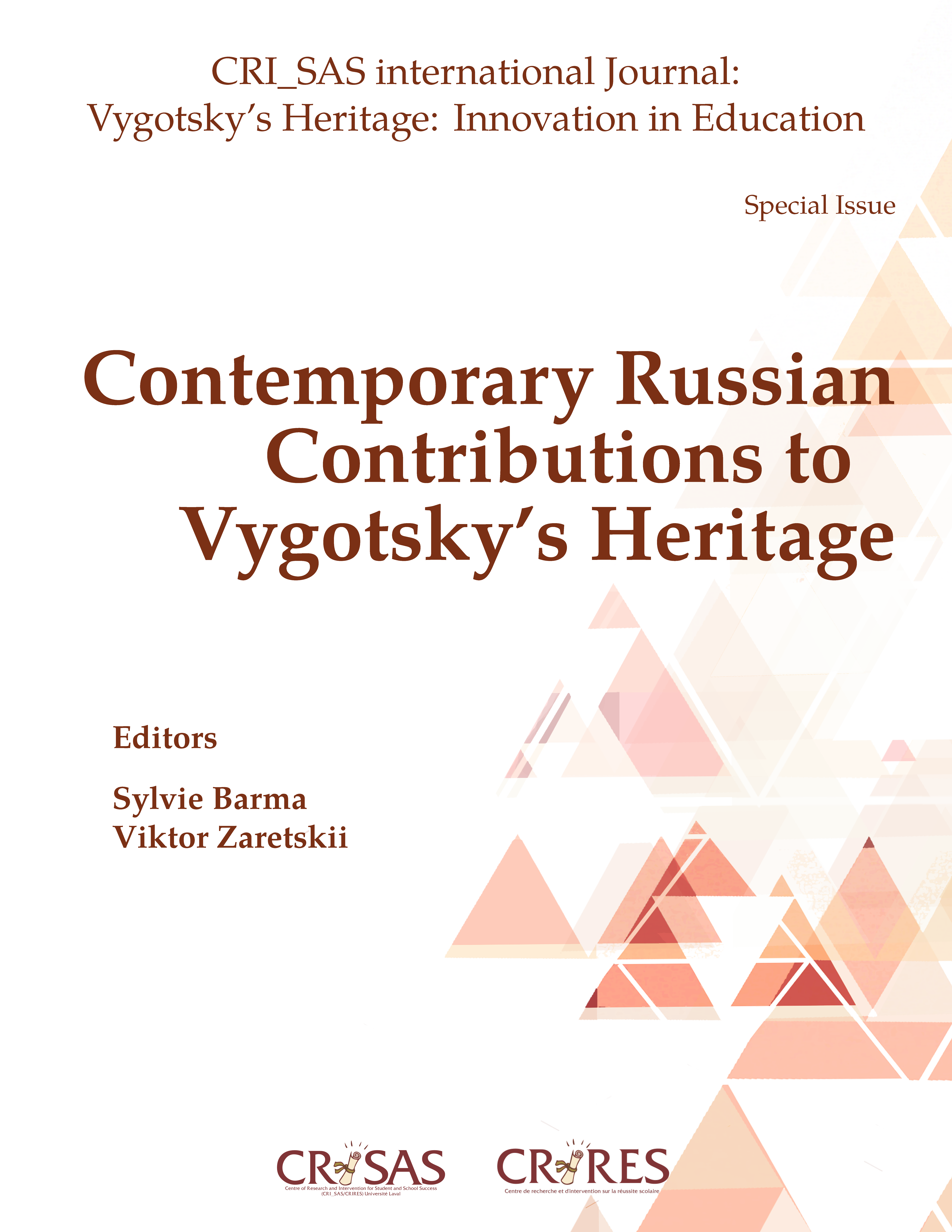Translating Cultural-Historical Psychology: Comments from Lay Professional
DOI:
https://doi.org/10.51657/ric.v4i1.40988Keywords:
Cultural-historical psychology, Translation, Psychological discourse, Terminology, Connotation, Scientific styleAbstract
In translating texts for the Chess Overall Development Project (Zaretskii, 2016), we have encountered several types of challenges that may be illustrative of what translators in the field of cultural-historical psychology (CHP) may deal with. Translators use various tools and strategies in their search for equivalence. Lack of the uniform CHP vocabulary and consensus on the CHP terms: di˙erences in transformational techniques and levels of the translators’ linguistic competence and their competence in CHP as such, result in co-existence of various translations of the same concepts, which may interfere with the process of communication and become a subject of controversy. Other challenges relate to specific linguistic features of the psychological scientific discourse of CHP, i.e. the need to observe rigorous scientific requirements to style and content, and abundance in expressive, emotionally and culturally charged utterances and vocabulary. The CHP terminology is characterized by specific word formation; lack of stylistic neutrality and lack of equivalent terms in target languages. Therefore, an appropriate translation implies using a special modification technology to create a target-language term which would have an equivalent denotative meaning; meet the requirements of the scientific style and preserve its stylistic uniqueness, emotional, and cognitive relevance (ensuring congruence of the reader’s experience with the author’s experience as mirrored by the lexical unit).
References
Bateman, A., & Fonagy, P. (2010). Mentalization based treatment for borderline personalitydisorder. World psychiatry, 9(1), 11–15.
Cabré, M. T. (2010). Terminology and translation. In Y. Gambier & L. van Doorslaer (Eds.), Handbook of translation studies (p. 356-365). Amsterdam/Philadelphia: John Benjamins Publishing Company.
Chandler, D. (2002). Semiotics: the basics. New York: Routledge.
Graumann, C. F. (1996). Psyche and her descendants. In C. F. Graumann & K. J. Gergen (Eds.), Historical dimensions of psychological discourse (pp. 83–102). Cambridge: Cambridge University Press.
Prokhorova, V. N. (1996). Russkaya terminologiya (leksiko-semanticheskoe obrazovanie)[Russian terminology (lexical-semantic education)]. Moscow: Filologicheskiy fakul’tet Publ.
Schiffrin, D. (1998). Approaches to discourse. Journal of Pragmatics, 3(29), 355–359.
Van der Veer, R., & Yasnitsky, A. (2011). Vygotsky in english: What still needs to be done. Integrative Psychological and Behavioral Science, 45(4), 475–493.
Veresov,N. (2004). Zone of proximal development (ZPD): the hidden dimension? Language as Culture—Tensions in Time and Space., 1, 13–30.
Veresov,N. (2016). Perezhivanie as a phenomenon and a concept: Questions on clarification and methodological meditations. Cultural-Historical Psychology, 12(3), 129–148.
Vygotsky, L. S. (1978). Mind in society: The development of higher psychological processes. Cambridge: Harvard University press.
Yasnitsky, A. (2012). L. S. Vygotsky’s “tool and sign” as a “benign forgery”: Introduction to virtual dialogue. PsyAnima, Dubna Psychological Journal, 5(1), 112–113.
Zaretskii, V. K. (2016). Odin shag v obuchenii – sto shagov v razvitii: Ot idei k praktike [Vygotsky’s Principle "One step in learning - One hundred steps in development": From idea to practice]. Kul’turno-istoricheskaya psikhologiya [Cultural-Historical Psychology], 12(3), 149–188.
Downloads
Published
Issue
Section
License
Copyright (c) 2017 Olga D. Tuchina

This work is licensed under a Creative Commons Attribution-NonCommercial-NoDerivatives 4.0 International License.

